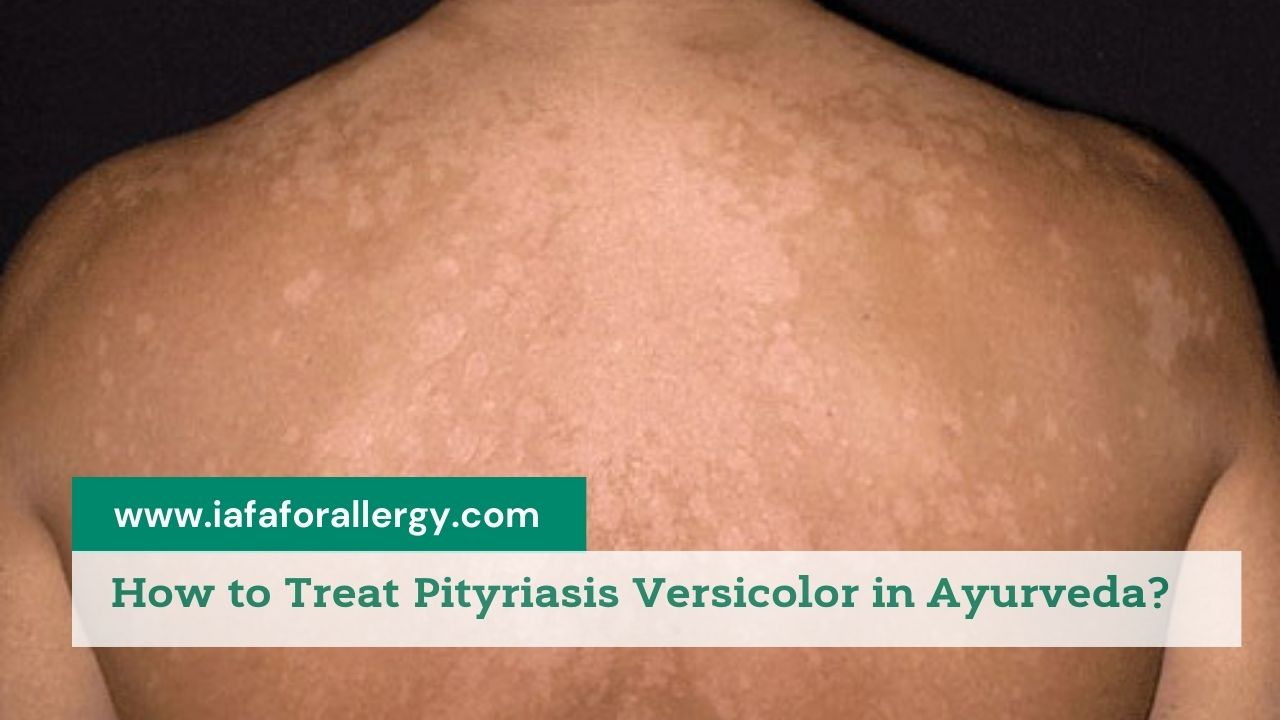Are you suffering from Pityriasis Versicolor? Want to treat Pityriasis Versicolor through Ayurveda? We at Institute of Applied Food Allergy® provide effective ayurvedic remedies for treatment of Pityriasis Versicolor. So, first let’s know about Pityriasis Versicolor.
What is Pityriasis Versicolor?
Pityriasis Versicolor commonly known as tinea versicolor is a fungal infection that causes the skin to become scaly and discoloured. It is caused by a type of yeast. This is the most common cause of skin rash in teens and young adults. The growth of yeast over the skin surface results in uneven skin tone and scaling which is non-contagious.
It is a superficial fungal infection characterized by skin pigmentary changes due to the colonization of fungus Malassezia yeasts, which is a part of many microscopic organisms that live on the skin. Increase in humidity, temperature and carbon di oxide are the important predisposing factors with high rate in tropical and subtropical regions.
Despite of its benign nature, pityriasis versicolor can lead to emotional distress, self-confidence and social stigmatisation.
What are the Signs and Symptoms of Pityriasis Versicolor?
The skin patches caused due to pityriasis versicolor occur mainly on the torso and upper arms. But these can also appear on the face and neck, especially in younger kids. The colour of the patches may be white, brown, red or pink.
- The patches can be dry, flaky, scaly or flat in appearance and slightly raised.
- They may be a little itchy.
- Initially, there may be small and round patches present but then they join together to make larger patches.
- The patches may look lighter than the surrounding skin as the yeast prevents the skin from tanning.
What are the Causes of Pityriasis Versicolor?
Pityriasis Versicolor is caused by yeast that normally lives on the skin. When the environment gets warm and moist, it can grow out of control and causes the symptoms.
The hot, humid and excessive sweating can create a warm, moist environment for the yeast to over-grow. That’s why, the infection is more common in tropical countries. The oily skin also plays a role in causing yeast infection. That’s why, it affects teens and younger adults more.
Ayurvedic View of Fungal Infections
Skin disorders in Ayurveda are categorized under Tridoshvyadhi. In Ayurvedic classical texts, fungal infections are explained as Dadru and Sidhma in the category of Kushta. According to Master Charak, Sidhma is characterized by branny desquamation having white and copper colour. The lesions are very thin. The colour of the pityriasis lesion is similar to the flower Alabu (Lagenaria siceraria). These features of Sidhma mentioned in Ayurveda are almost similar to Pityriasis Versicolor in terms of scaling, site and colour of the lesion.
Diagnosis and Treatment of Pityriasis Versicolor
Pityriasis Versicolor is diagnosed by just looking at it. Physicians also ask about the symptoms and the patient’s lifestyle.
Ayurvedic Treatment of Pityriasis Versicolor
Ayurvedic Treatment of Pityriasis Versicolor depends upon the condition of the patient, doshas involved, prakriti of the patient, Ayurvedic treatment is prescribed to the patient to treat pityriasis versicolor naturally. Krimihar Chikitsa is a must in fungal infections. In Ayurveda, it is treated by Shodhana (purification), Shamana (correcting the vitiated humors) and Bahiparimarjana (topical) chikitsa.
In Ayurveda, many herbal drug combinations are effectively used for the treatment of pityriasis versicolor. In addition, many lepa (herbal drug containing ointment) formulation is also prescribed to get the quick and effective response. The Ayurvedic lepa enters into the romkupa (hair follicles) and further gets absorption through swedavahisrotas (pilosebaceous route) and shiramukha (skin pores) leading to desired effects as it has been proved that the maximum absorption of some compounds occurred at sites with higher follicular density.
Since it is a chronic and recurring fungal infection, Ayurvedic treatment helps in treating the infection from its root cause and preventing its recurrence.
Some Tips to Avoid Fungal Infections
- Take extra care during hot and humid weather.
- Maintaining personal hygiene is very important.
- Avoid wearing tight clothing or footwear.
- Enhance your immunity.
Conclusion
Thus, Ayurvedic treatment of pityriasis versicolor possesses cutaneous antifungal agents against the Pityriasis versicolor without any side effects.
So, if you are suffering from pityriasis versicolor and want best solution then please visit our official website to book your appointment for online video consultation with Dr. Sahil Gupta (Registered Ayurvedic Vaidya and Allergy Specialist).








